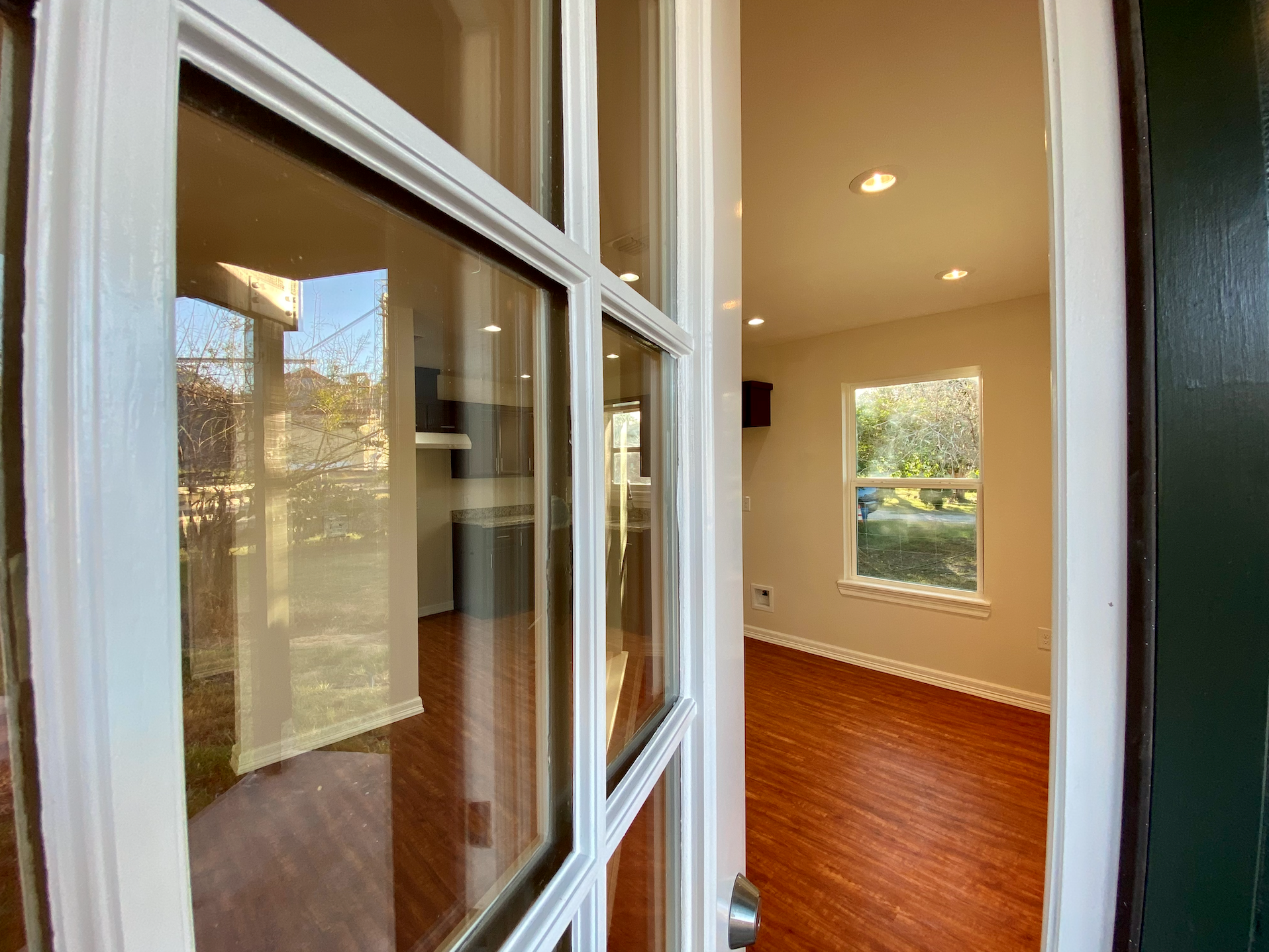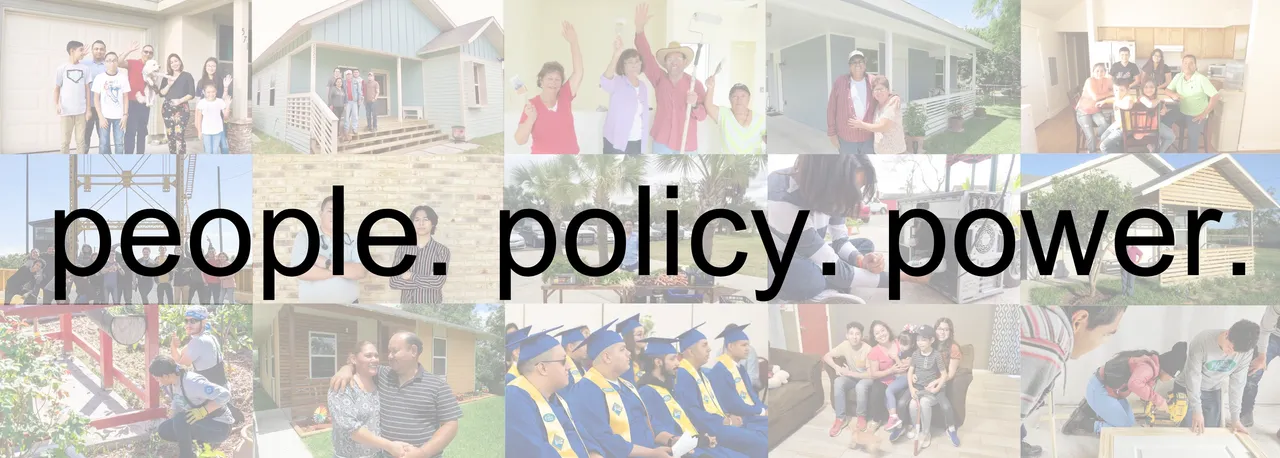The Rio Grande Valley has a reputation as a very affordable place to live, especially when compared with other urban areas in Texas and elsewhere. Historically, the rates of homeownership in the Brownsville and McAllen metro areas have been relatively high, currently at 66% and 68% respectively. But for most area residents who do not already own a home, it’s becoming a more difficult goal to reach. Although home prices in both metro areas are in fact substantially lower than in the state’s largest markets, RGV residents earn much less, and home prices are rising faster than incomes. This post will look at homeownership affordability trends in the area, efforts that are underway to address this situation, and what leaders could do to promote affordable home ownership.
A new fact sheet from cdcb | come dream. come build, presents data to demonstrate that affordability for local residents is a myth. Using the Texas A&M Real Estate Center affordability measurement method, the fact sheet shows that in the third quarter of 2020 the Brownsville-Harlingen and McAllen-Edinburg-Mission MSAs were the two least affordable to buy a home of all 26 Texas metropolitan areas. The fact sheet shows that even the highest priced Texas markets of Austin, Dallas, and Houston are more affordable than the Brownsville and McAllen metropolitan areas.
It is important to look at affordability in the RGV from the perspective of people already living in the area, not from that of a resident of Austin, Dallas, or elsewhere who might move to the Valley. The median income for the Brownsville-Harlingen metro area in 2019 was $37,900, just 58.5% of the statewide median of $64,800. Because a median is the middle number in a range, as many people had incomes below $37,900 as above it.
Corpus Christi and Beaumont-Port Arthur are two Texas MSAs comparable in population to the Brownsville-Harlingen MSA. Median incomes in those two metro areas in 2019 were 66.5% and 46% higher respectively than Brownsville-Harlingen. For affordability in these metro areas to be comparable to the RGV, we would expect home sales prices to be higher by similar percentages. But metro Corpus Christi prices were 33% above Brownsville in 2020, while Beaumont-Port Arthur home prices were only 4% higher, making both markets more affordable than Brownsville.

Esperanza Homes builds a large number of new homes in the two RGV metro markets, with most selling for $150K-$300K and about 50% being for first time homebuyers. Company president Nick Rhodes noted that at the beginning of the pandemic in early 2020, a house that sold for $150K now sells for about $175K. What he cited tracks with the change in median sales prices during only 2020, as they increased 15.3%, from $150K to $173K. One cause has been the rapid rise in the cost of building materials across the U.S. in the past year. Low interest rates have made rising prices less of a problem, but rates have begun to increase lately, making it more difficult to qualify for a loan.
Cdcb and Low/Mod Homebuyers
cdcb | come dream. come build is among a few area organizations that provide support to families to bring homeownership within reach, offering home buyer education and down payment assistance in addition to building new, affordable homes. During 2020, cdcb assisted 73 homebuyers who purchased a home with the median sales price at $104,000. Challenges for most low- to moderate-income families to buy a home include having a credit rating sufficient to qualify for a home mortgage, saving enough cash for a down payment and closing costs, understanding the responsibilities of homeownership and mortgage loan underwriting criteria. They offer education on homebuying in an 8-hour course, also providing individual counseling as needed to help buyers reach homebuying objectives.
Once a low- to moderate-income homebuyer achieves sufficient credit to qualify for a mortgage loan, the other major hurdle is making a down payment and covering closing costs. Across the nation, down payment assistance may be available to help homebuyers with incomes below 80% of the local median to reduce the amount of cash they will need to complete a home purchase. cdcb is a major provider of down payment assistance for the Brownsville-Harlingen MSA using funds that come from governmental sources. From 2016 to 2020, cdcb provided DPA to 274 homebuyers totaling $4,233,888, an annual average of $847K in assistance to 55 borrowers per year at just over $15K in support per homebuyer. cdcb projects it will increase its DPA recipients by about 15% per year from 2021-2025.
Recommendations to Promote Affordable Homeownership in the RGV
- Increase funding for down payment assistance (DPA) to enable more low- to moderate-income homebuyers to purchase a home and to account for rising home prices.
- The federal government should increase CDBG Program funding, a major source for DPA provided at state and local government levels;
- State and local governmental agencies could increase the percentage of federal CDBG funds for DPA;
- The State of Texas should consider using funds from its Housing Trust Fund for DPA;
- Encourage member financial institutions to apply for grant funds through Federal Home Loan Bank to use for DPA for borrowers.
- The Biden Administration’s First Down Payment Tax Credit proposal has promise.
- Support homebuyer counseling to help more first-time buyers address credit challenges and prepare them to be successful homeowners. This also reduces lender risk and makes communities more sustainable.
- Promote new construction of more high-quality affordable homes for sale and home repair to help current homeowners.
- Local government should target more excess publicly owned land for affordable homes.
- Cities should look at using inclusionary zoning to address the need for affordable new home development.
- Support passage of the Neighborhood Homes Investment Act (S. 4073) to create a new tax credit in qualified census tracts to cover part of the gap between development costs and sales prices.
- Increase funding of the USDA Single Family Direct Loan program and adapt guidelines to ensure persistent poverty counties receive funding to expand home ownership opportunities to low/mod income, elderly or disabled individuals in rural areas.
- Increase funding of the HUD Self-Help Homeownership and Opportunity Program (SHOP) to expand homeownership opportunities through sweaty equity.
- Reform the federal income tax to enable low- to moderate-income homeowners to derive benefit from tax deductions that have long subsidized higher income homeowners.
- Promote economic development, education, and job training to encourage much needed income growth and career advancement in the RGV.
- Congress should provide an annual $2 billion allocation to the Treasury Department’s CDFI Fund so it can deploy grants to CDFIs in scaling mortgage lending products while supporting small businesses.
- Instead of waiting for Congress to raise the minimum wage, Texas should take the initiative itself to set a statewide minimum wage well above the current $7.25 federal rate.
- Attract additional sources of philanthropic support that could help accomplished local organizations do more to meet the growing need for affordable home ownership opportunities by making a case for the unique challenges that residents of the Rio Grande Valley face.
people. policy. power. “p3” is a small group of experienced practitioners who analyze policies and practices to inform development of equitable legislation and sound, affordable financial products. p3 works to expand information available to decision makers and to promote public, private, and philanthropic investment to support the incorporation of low-and moderate-income individuals into the financial mainstream and their ability to build wealth.

